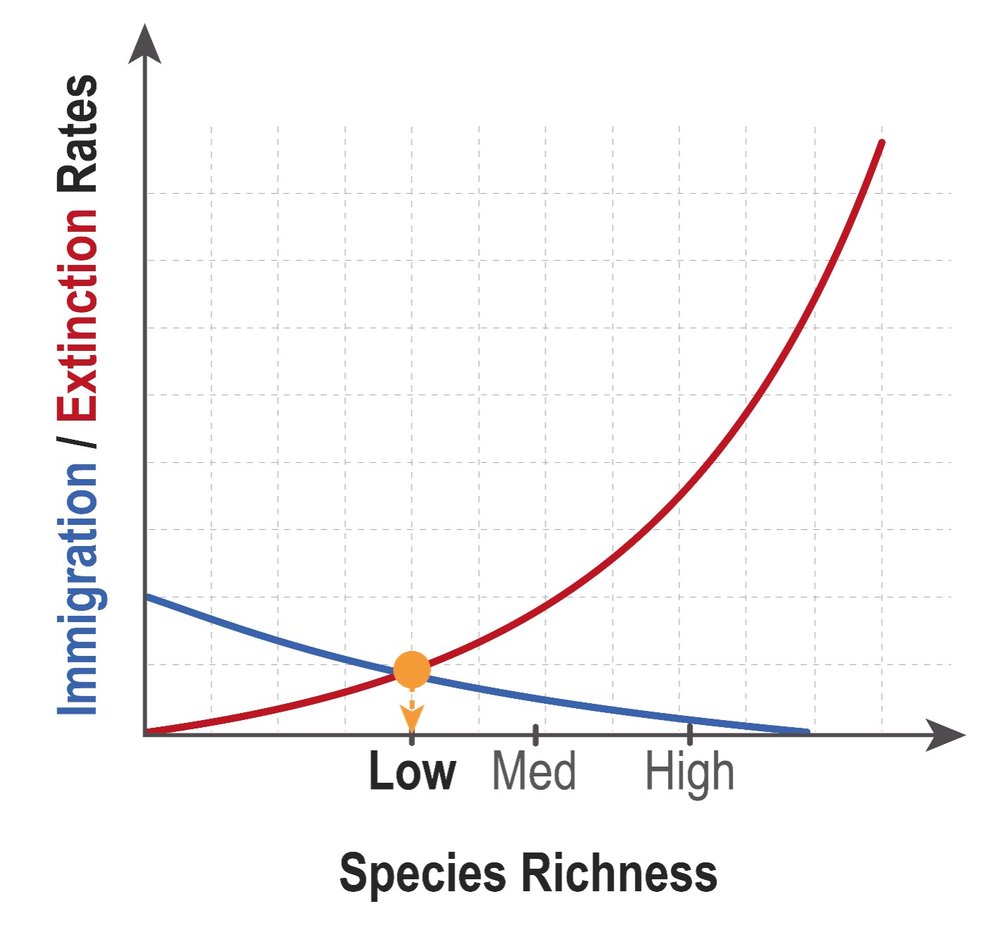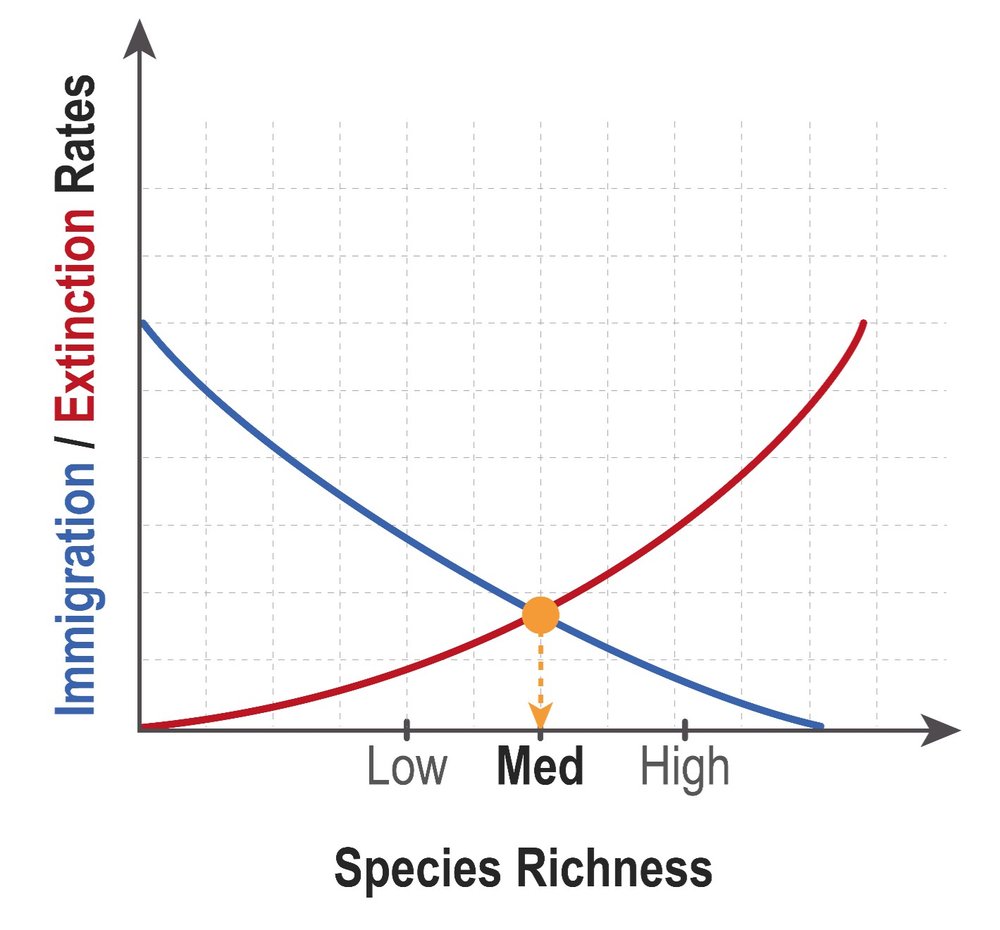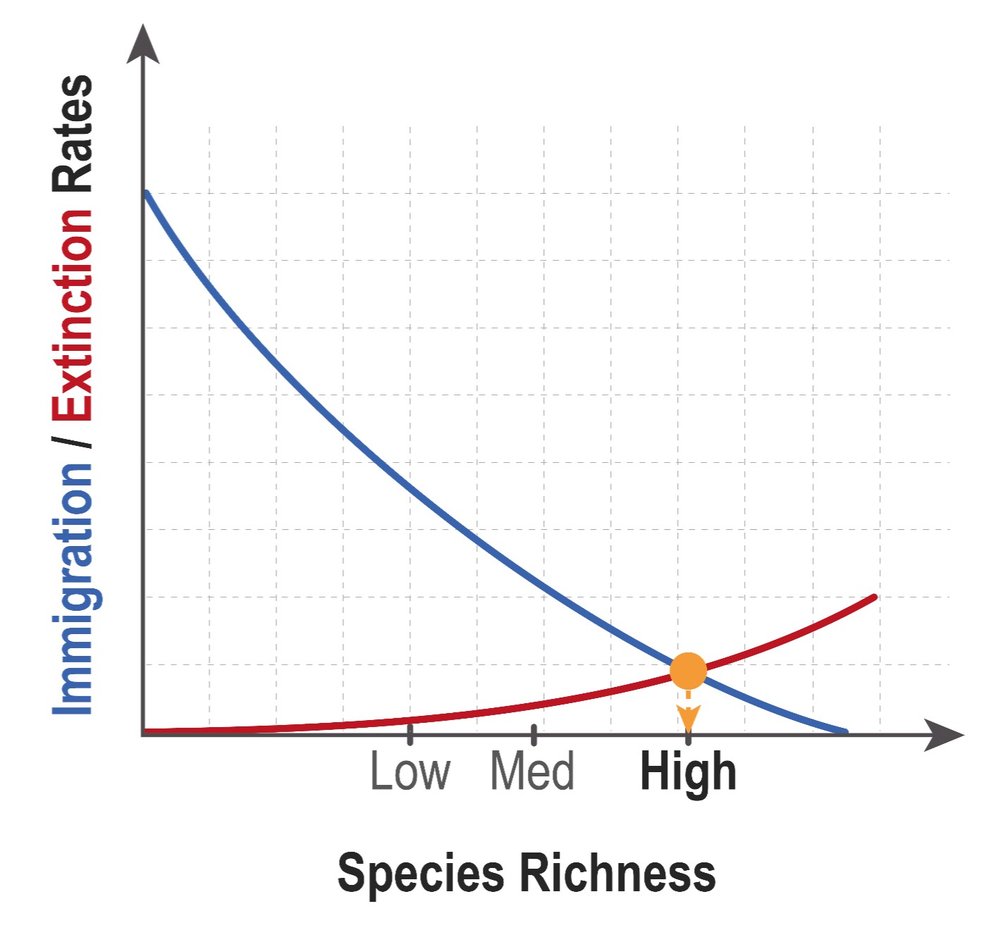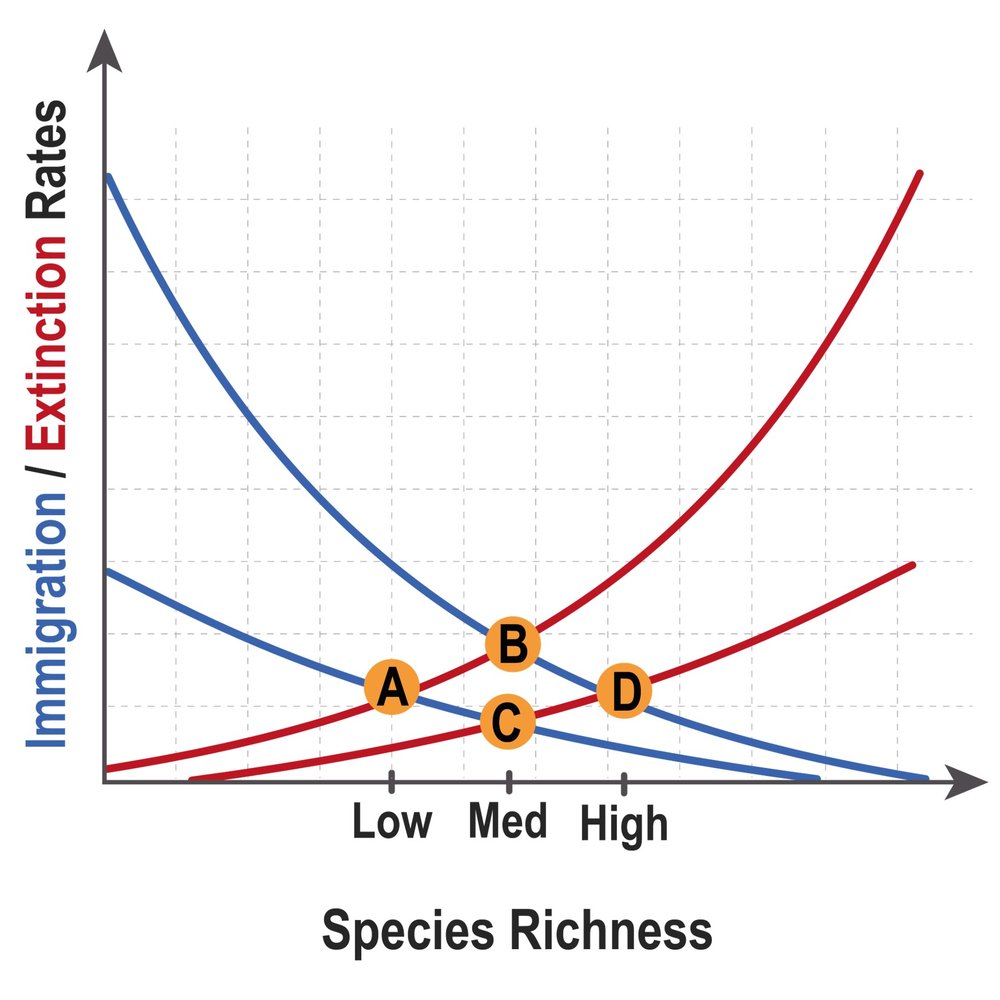This video, we're going to switch our focus over to geographic impact on communities, more specifically focusing on 2 biogeographical factors that have a significant impact on a community's species diversity. And those two factors are latitude and area. Now latitude actually has an inverse relationship with species diversity, which means that species diversity typically decreases with increasing latitude further from the equator. Now this is for several different reasons including the fact that the climate near the equator fosters more biological productivity, which can support a greater range of species. And this is because the equator receives more direct angles of sunlight throughout the year and more annual precipitation than any other latitude on Earth.
And, also, tropical communities tend to be older than communities at higher latitudes, and this is because glaciation events during ice ages have somewhat hit the reset button on communities that are at higher latitudes. But communities that fall on tropical regions near the equator haven't been impacted as much, and so they've simply had more time for speciation to occur, creating a greater species diversity along the equator. Now in terms of area, it actually has a directly proportional relationship with species diversity, which means that species diversity typically increases with increasing area. And this is simply because larger areas have more resources available for a greater range of species. They offer more habitats and more microhabitats, which can support a greater range of species.
And also, larger areas are simply more likely to be found by migrating species than smaller areas are. So let's take a look at our image down below, which is really just a visual representation of the same exact ideas we just talked about. So on the left hand side, we're focusing on latitude and its relationship to species diversity. So notice that we've got this graph here that has species richness for mammals on the x axis, and recall that species richness is simply just the total number of different species in the community. So it's just a simple count, if you will.
And what you'll notice is that these species richness bars here are at their highest right along the equator. And so this is suggesting a greater species diversity along the equator. And notice that as you get further and further away from the equator towards higher latitudes on earth, the species richness drops off, indicating that the species diversity also drops off. And this tends to be the case for most species. Now on the right hand side, we're focusing on area.
So notice that we have island area on the x axis and species richness for birds on the y axis. And notice that when the island area is really, really small, this creates relatively low species richness and low species diversity. But notice that as the islands get larger and larger and larger, that they have greater species richness, which corresponds with greater species diversity. So this here concludes this lesson, and we'll be able to apply these concepts moving forward. So see you all in our next video.





